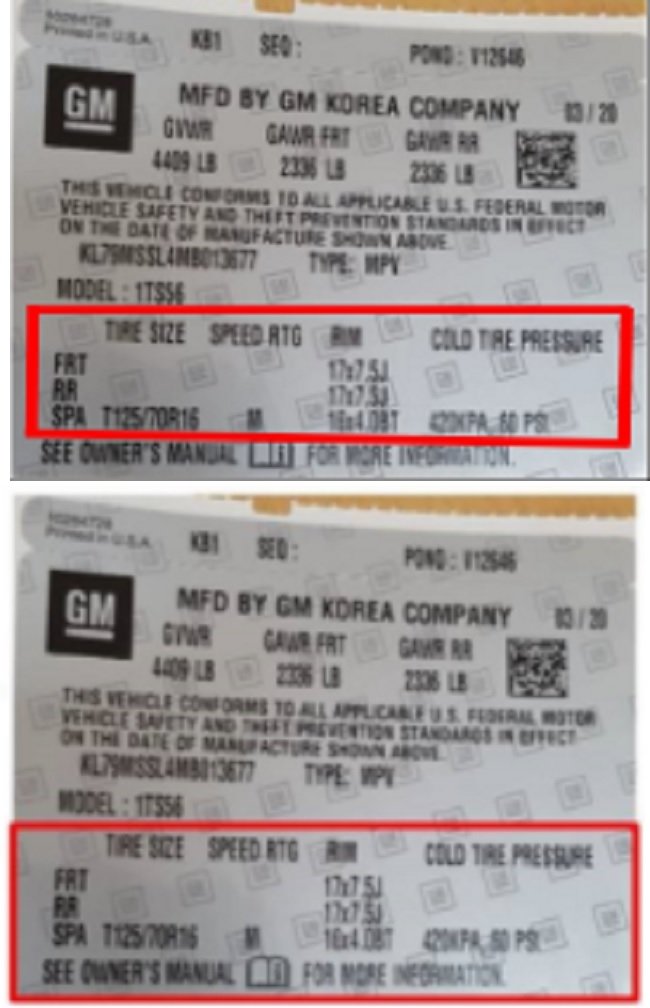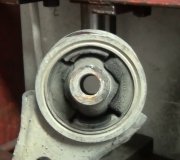There's a number of differing opinions as to what is the correct or ideal tire pressures. When I was the suspension and alignment specialist at a very nice family-owned dealership, I never looked at the stickers on the door posts. Those pressures are recommended for best comfort, but they also have to take into account any replacement tire you could buy. In the '90s, vehicles were just starting to show up with tires rated at 44 psi max on the sidewalls, but you could still buy replacements rated at 35 psi max. If the manufacturer had put a sticker on that listed 40 psi, that only applies to the tires that came on the vehicle. With the replacement 35 psi tires, you'd be over-inflated if you set them to the recommended 40 psi.
What I did was when a tire listed 35 psi mx on the sidewall, I set them to 35 psi, and when they listed 44 psi max, I set them to 40 psi, and never had a comfort or handling complaint in the ten years I was there.
I did get involved with a picky customer who actually was a retired mechanic from that same dealership. He bought a new '96 Caravan, then immediately started complaining of hard steering. At first we replaced the steering gear, then the power steering pump, but neither satisfied him. After more discussion, it turned out that what he was complaining about was the steering wheel effort required to change lanes on city multi-lane roads. After struggling with this for a few days, I raised his tire pressures from 35 psi to 40 psi, then told him to go out and try it. Finally he came back with a big grin on his face, and he was satisfied. When told all I did was increase the tire pressures, his response was, you can't do that; it's going to ride like a lumber wagon". My reply was, "you just drove it, and you were happy with how it felt".
Five pounds made all the difference and the customer was in tune enough to feel the difference.
We all remember the Ford Explorer tire problem that led to the politicians demanding another safety system. Ford wanted those tires set to 28 psi to create a more comfortable ride quality than that of their competitors. With 44 psi tires, that left them badly under-inflated. The excessive sidewall flexing led to heat build-up and eventual failure / blowouts.
What I would suggest is checking the tiny, hard-to-read maximum pressures on your tires' sidewalls, and go by that rather than what's on the door sticker. Keep in mind the door sticker has to accommodate any replacement tire on the market to avoid having you over-inflate them. Not all tires call for the same maximum pressures, so not the same pressures will be right for every tire for comfort and handling.
The pressures you measure only apply to cold tires, meaning not driven on and warmed up. When outside temperatures change ten degrees, that can affect the tire pressure by a pound, but you never see anyone changing tires pressures because it's a little warmer or cooler today than yesterday.
I realize you likely don't need these, but for the benefit of others researching this topic, here's links to some related articles that may be of interest:
https://www.2carpros.com/articles/how-to-use-a-tire-pressure-gauge
https://www.2carpros.com/articles/how-car-tires-work
Tire pressures aren't listed on our online service manuals, but I did find this recall notice that applies to your model if it came with optional 17" wheels. I know they're hard to read, but when I blew them up, they list 60 psi and 50 psi. The recall is simply because those pressures were missing from the door sticker. The remedy was to mail the correct stickers to the owners, or the dealers would install them on any vehicles still in inventory.
There's two parts to these increased pressures. Part has to do with different sizes, but the biggest role of tire pressures is they are determined by the need to hold up the weight of the vehicle. A tire might call for a certain pressure on one model, but require a different pressure for that same tire on a different car model. Under-inflation will lead to excessive flexing and heat build-up, with early failure and increased tire wear on the outer edges. Over-inflation can lead to a harsh ride where you feel every tiny bump in the road, and if bad enough, it will increase tire wear in the center of the tread.
Tire pressures are also affected by tire size. If you have a smaller tire, you have fewer square inches, but you still have to hold up the same weight of the vehicle. That means you need more pounds per square inch multiplied by fewer square inches to get the same load-carrying capacity. I have a feeling your mechanic was looking out for your best interest, but the discussion was over-involved. I just set 'em and watched my customers buzz off into the sunset with smiles on their faces.
Please let me know if that helps or if I can clarify anything.
Image (Click to make bigger)
Thursday, March 24th, 2022 AT 6:05 PM



